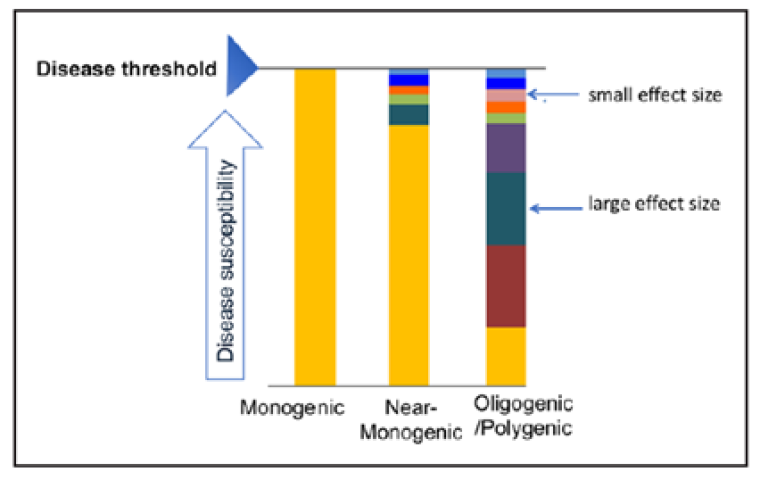Non-Mendelian genetics encompasses a range of inheritance patterns that do not follow the classic Mendelian laws. These patterns include phenomena such as incomplete dominance, codominance, multiple alleles, polygenic inheritance, and environmental effects. Unlike Mendelian genetics, where traits are determined by a single gene, non-Mendelian genetics often involves multiple genes and complex interactions that contribute to an organism's phenotype.1

A recent study by Nauffal et al. explored this topic by a genome-wide association study (GWAS) conducted on 84,630 UK Biobank participants to create a polygenic risk score (PRS) for QTc prolongation in the general population.2 A PRS is a numerical value that estimates an individual's predisposition to a certain trait or disease, based on the number and impact of genetic variants. It is calculated by summing the effects of numerous genetic variants, each of which contributes for a small amount to the overall risk of developing a particular trait or disease. In a second step, the study utilized whole-genome sequencing and ECG data from 26,976 participants in the TOPMed (Trans-Omics for Precision Medicine) program, allowing the identification of carriers of causal variants in genes associated with the QT interval. The study examined the associations of QTc with the PRS and rare variants in TOPMed.

Mean age of participants from the UK BioBank was 57.9 years, 49% were males and 93.5% had European Ancestry. Mean QTc (Bazett formula) was 415.8±23.3 (SD) ms. Using the GWAS results a PRS comprising 1,110,494 common variants was constructed and applied to the TOPMed cohort with additional information about pathogenic Long QT syndrome (LQTS) gene variants.
Among patients with a QTc >480ms, only 3.4% of individuals carried a monogenic rare variant, whereas 21% had a PRS in the top decile (p90). Consequently, 75% of individuals with a significant QT prolongation did not have a rare genetic variant nor a high burden of PRS. Carriers of a monogenic rare variant who fell in the top decile of polygenic risk (n=14) had a 21.7 ms (95% CI 10.1-33.3) longer QTc compared to noncarriers with polygenic risk in the lower 90th percentile

Several aspects should be highlighted regarding the implications of this relevant work for clinical practice. First of all, it was based on a general population cohort which precludes its direct application to families with LQTS, nevertheless, these results might suggest that a proportion of patients with LQTS and non-conclusive genetic testing might be related to a polygenic substrate. The application of PRS in this context is yet to be elucidated. Despite extensive genetic analysis, the study found that about 75% of individuals with a QTc over 480 milliseconds could not be explained by either a high PRS or a monogenic variant, suggesting other unknown factors at play.
Also from a clinical approach, these results open the question whether patients with a prolonged QT and a high PRS not meeting LQTS diagnostic criteria might benefit from preventive measures applied to LQTS patients and healthy carriers of LQTS gene variants. Additionally, PRS might explain the variable penetrance observed in family members sharing a monogenic variant and could help a tailored follow-up and management in this setting. Disease threshold can be reached by the combined effect of rare monogenic variants, oligogenic variants, polygenic common (or less common) variants, as well as by the added influence of extrinsic/acquired factors. From that point of view, genetics is not anymore the exclusive field of rare diseases, but rather it is an important disease modulator even in common conditions, like in acquired repolarization disorders.
The field of Cardiovascular Genomics is increasingly spotlighting non-Mendelian genetics, as evidenced by a growing number of publications. Recently, Aung et al. explored the influence of PRS on left ventricular maximum wall thickness using data from the UK Biobank cohort.3 Similarly, a recent preprint by Zheng et al. focused on dilated cardiomyopathy, drawing on data from the HERMES Consortium, further illustrated the expanding interest in complex genetic contributions within this area of study.4
Access the article : Monogenic and Polygenic Contributions to QTc Prolongation in the Population

 Our mission: To reduce the burden of cardiovascular disease.
Our mission: To reduce the burden of cardiovascular disease.